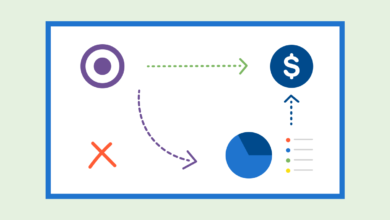How to Calculate Profit Margin: A Complete Instruction for USA Companies

One of the most important financial ratios used to measure a firm’s profitability is the profit margin. Learning to calculate profit margin is one of the most effective ways to better understand how a business is controlling its costs in relation to its revenue. Regardless of whether you are a small startup or the chief executive of a sizeable corporation, getting profit margin calculations down allows you to keep on top of healthy finances and achieve greater success later down the line.
In this article, we’ll take you through the different kinds of profit margins, how you calculate them, and what do they mean to your business. We’ll explore U.S.-specific accounting standards, tax implications and digital tools that can facilitate these calculations for business owners as well.
What Is Profit Margin?
Profit margin is a ratio that calculates how much money a company actually retains as profit after expenses are considered. It is stated as percentages of revenue and helps businesses and investors understand how much of every dollar of revenue is a profit. A higher profit margin means that you are more efficient at converting sales into actual profits.
There are different kinds of profit margins that provide different perspectives on a business’s financial performance:
Types of Profit Margins
Gross Profit Margin
Gross profit margin measures how effectively a company can generate profit after the costs of goods sold have been subtracted, like wages and materials.
Formula:
Gross Profit Margin (%) = (Revenue − Cost of Goods Sold Revenue) × 100
Example:
Here is a simple example:
If a company has $1,000,000 in sales and cost of goods sold (COGS) of $600,000:
Gross Profit Margin = [ ( $ 1, 000, 000 − $ 600, 000 ) / $ 1, 000, 000 ] × 100 = 40 %
This means the company is left with 40% of its revenue after paying for direct production costs.
Operating Profit Margin
Operating profit margin measures a firm’s management efficiency on its operating expenses; in other words, from its operating profit, excluding revenue a firm doesn’t include as part of its operating cost, such as changing taxes and interest.
Formula:
Operating Profit Margin (%) = ×100Operating Profit Revenue
Example:
Example: $150,000 operating profit on $1,000,000 revenue:
($150,000 / $1,000,000) × 100 = 15% Operating Profit Margin
This means 15% of revenue is left after the operating expenses are accounted for.
Net Profit Margin
Net profit margin shows a company’s overall profitability when all costs, including COGS, operating expenses, interest, taxes, and other non-operating costs, have been deducted.
Formula:
Net Profit Margin (%) = Net Profit / Revenue *100
Example:
For instance, if your net profit was $100,000 and revenue was $1,000,000:
Net Profit Margin = ($100,000 ÷ $1,000,000) × 100 = 10%
That means that the company has 10% of its revenue left over as profit after all costs.
How To Calculate Profit Margin—Step-by-Step
Calculating profit margin for your business is a fairly simple process, though you’ll want to stick to standard U.S. accounting principles like GAAP (Generally Accepted Accounting Principles). Here’s a breakdown of what you need to do:
- Calculate Revenue: The first step here is to figure out the total revenue for the period in question (quarterly or yearly). This should be all the income earned from all revenue streams your business had.
- For Gross Profit: Of revenue, subtract Cost of Goods Sold (COGS). COGS are the direct costs of producing the goods or services sold by your business.
- For Operating Profit: Take the gross profit and subtract Operating Expenses. Operating expenses — which are include wages, rent, utilities and other administration costs of running the business, excluding taxes and interest.
Net Profit = Revenue — All other expenses, including all operating expenses, interest, taxes (federal, state and local) and any non-operating expenses
- Apply the Formula: Depending on the type of profit margin you’re calculating (gross, operating, or net), apply the appropriate formula.
- Interpret the Result: A higher percentage generally indicates greater profitability and operational efficiency. Track your margins over time and against industry benchmarks in order to assess your company’s performance.
For example: Let’s say your business offers:
Revenue: $1,000,000
COGS: $600,000
Operating Expenses: $200,000
Net Profit: $100,000
For Gross Profit Margin:
Gross Profit Margin = [($1,000,000 [$1,000,000Purchased_CoSt] - $600,000 [600,000Cost_of_Goods_Sold]) / $1,000,000] × 100 = 40%
For Operating Profit Margin:
Operating Profit Margin = [($1,000,000 − $600,000 − $200,000)/ $1,000,000] × 100 = 20%
For Net Profit Margin:
Net Profit Margin = ($100,000 ÷ $1,000,000) × 100 = 10%
What Profit Margin Means for U.S. Companies
Profit margins lays the groundwork for understanding your company’s fiscal health. Here’s why it matters:
- Performance Benchmark: Profit margins allow you to gauge how your business is performing compared to competitors. Between the 2, you can often develop a picture of how effective you would be at managing costs while maintaining high-profit margins due to increased sales.
- Investor Perspective: Investors look at profit margin as an important measure of a company’s profitability potential. The more consistent, or increasing the profit margin, the more attractive the business is, in the eyes of investors.
- Financial Planning: Finding out your profit margins will help in making decisions across the spectrum, from pricing strategies to cost-reduction initiatives. It can even pinpoint where you may need operational improvements.
Profit Margin Calculator – Gauge Your Earnings
We live in the 21st century and there are many accounting software tools in the market now which can automate the profit margin calculation and give you a snapshot of the real-time financial health of your company. Here are some of the most popular software solutions used by U.S. businesses:
- QuickBooks: Popular all-in-one software used to track everything between business expenses and profit margins.
- Xero: Cloud-based accounting software ideal for small to medium-sized businesses and with excellent reporting capabilities.
- FreshBooks: Targeting freelancers and small business owners, FreshBooks helps to track profit margins in a simple way, with basic invoice and expense tracking tools.
These are just a few examples of the software that are available to save you time and make sure all your calculations for profit margins and everything else are up to date and accurate.
The Relationship Between Taxes and Net Profit Margin
One thing to keep in mind when calculating Net Profit Margin is that U.S. businesses are subject to multiple levels of taxes at the federal, state, and local levels. All of these taxes can move the final net profit number a lot. Taxes are complex, but they do need to be a part of overall profitability.
When accounting for operating expenses, make sure your Net Profit Margin is accurate by accounting for all tax liabilities.
Conclusion
Profit margins are key indicators of your company’s financial health. Calculating and analyzing gross, operating, and net profit margins can provide greater insight into your business’s efficiency and profitability. Tracking such metrics is critical for the long-term success of your business, whether it be a small start-up or a well-established company.
Keep in mind that although profit margin calculations are fairly simple, external factors including industry trends, taxation, and economic conditions can affect profitability. Enhance your insight into profit margins and make educated decisions through the use of digital devices and industry standards.
Are you ready to boost your profit margins? Review your cost structure, pricing strategies, and operational efficiencies. You should follow-up with accounting software (like QuickBooks or Xero) to help automate the calculations and create greater insights into your financial performance.





